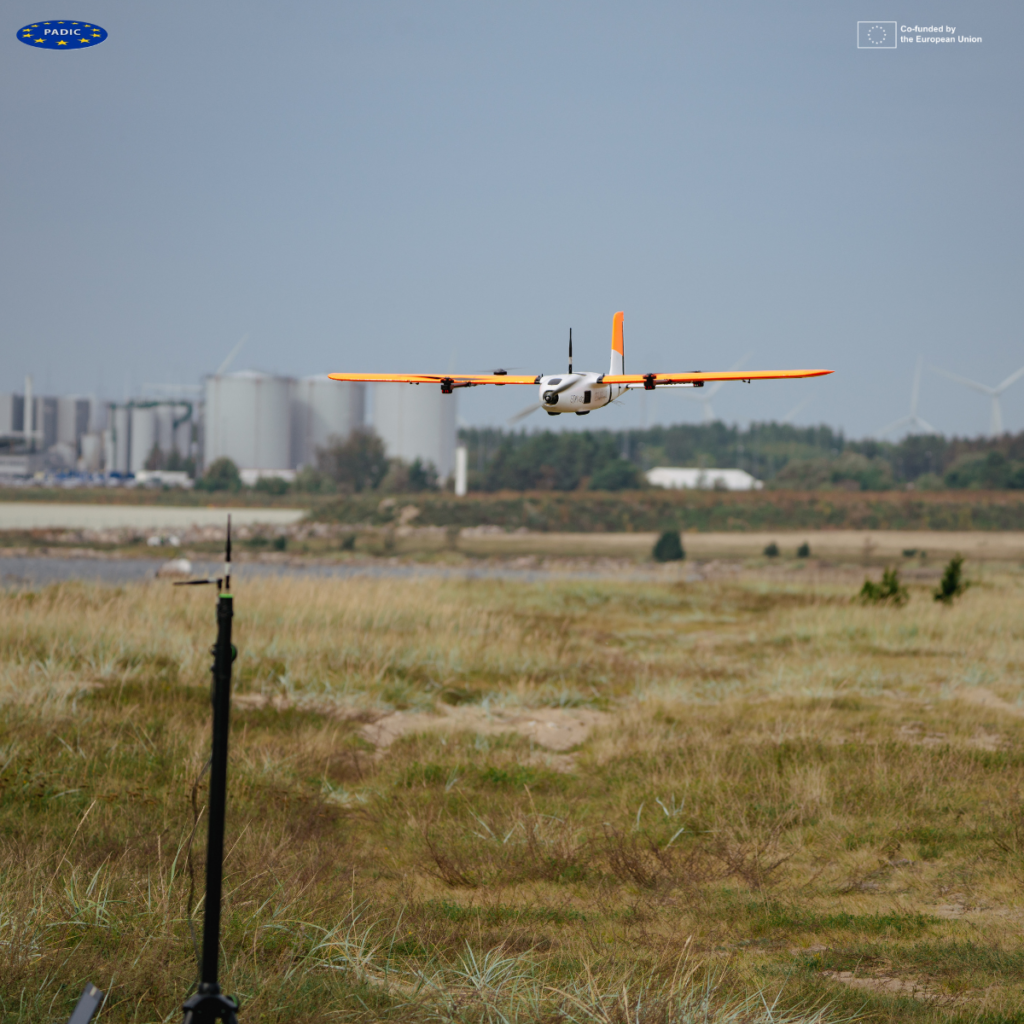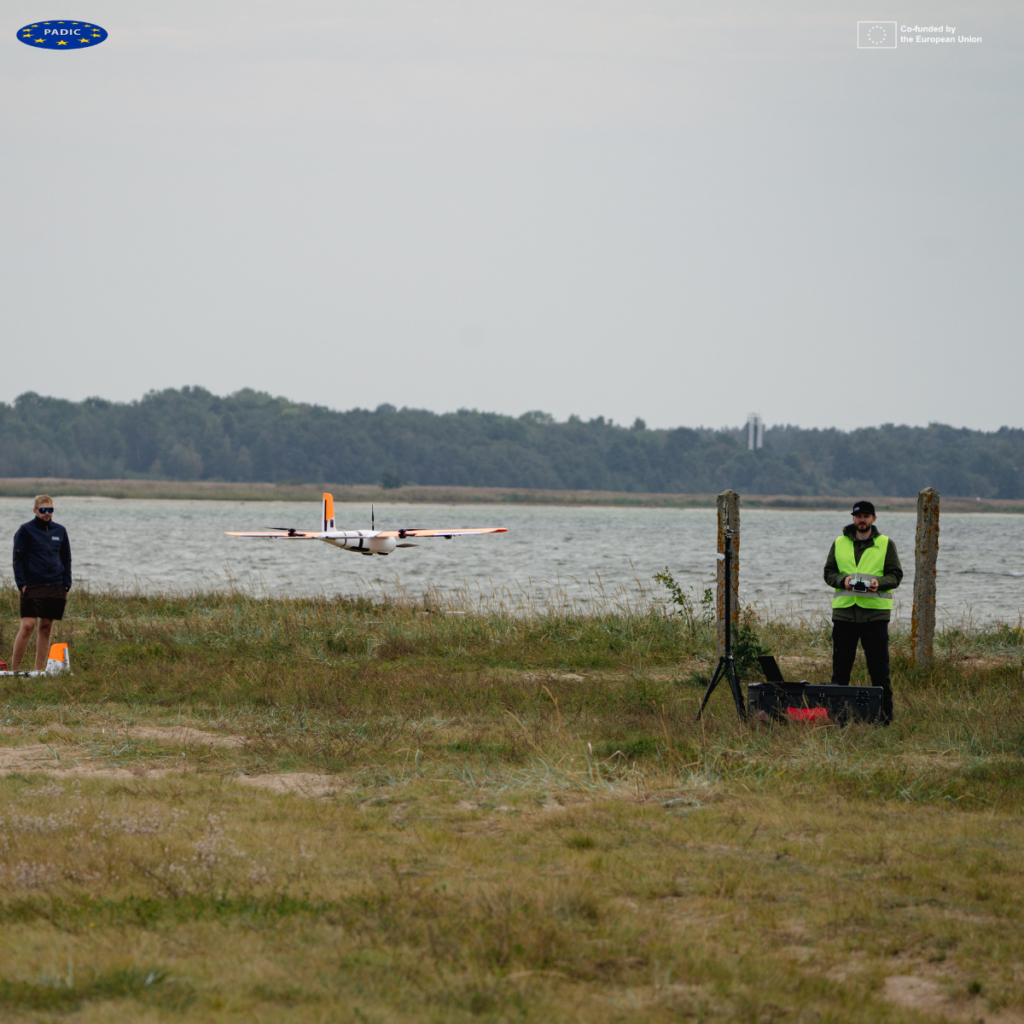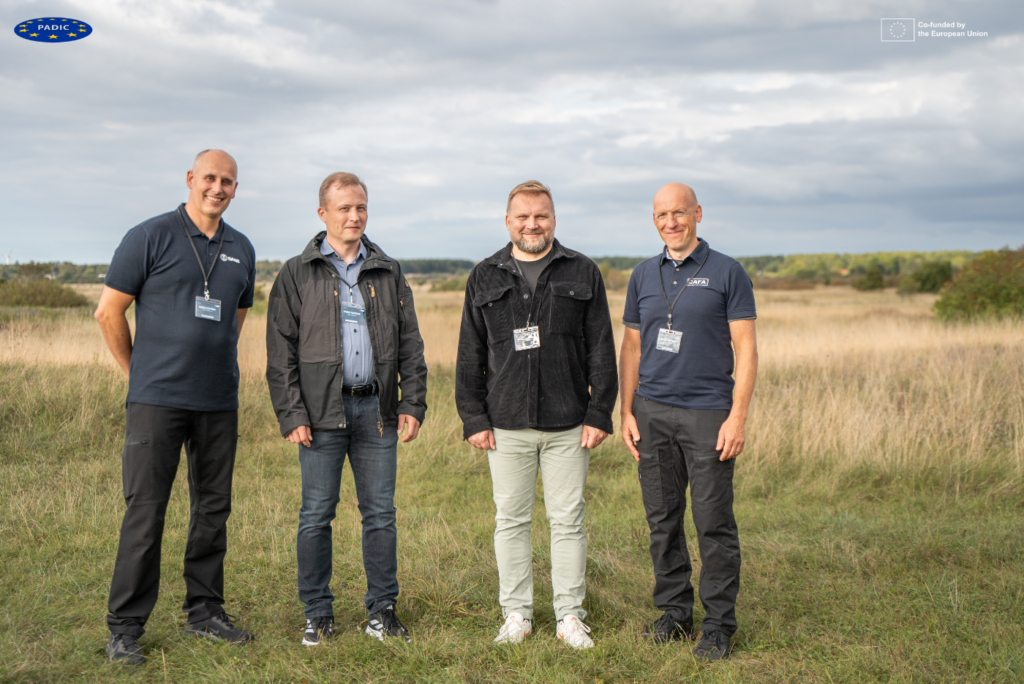The PADIC (Passive Acquisition by Digital Convergence) project, funded by the European Defence Industrial Development Programme (EDIDP), has reached a successful conclusion after three years of intensive development and collaboration. The Final Demonstration, held on September 11-12, 2024, brought together over 70 participants, including key stakeholders, industry experts, and project developers, to witness the culmination of this ambitious project. Over the course of the project, strong partnerships were built between SAAB, Patria, Rantelon, and CAFA, whose close cooperation played a crucial role in the project’s success.
On September 11, the Final Demonstration began with a seminar in Laulasmaa, where stakeholders were given a comprehensive overview of the PADIC project’s scope and achievements. Presentations highlighted the system’s concept, architecture, and key components, ensuring a common understanding among participants.
The day’s Technical Session #2 focused on system requirements and key performance indicators (KPIs), with experts sharing preliminary results and insights into the PADIC system’s performance.
This was followed by an equipment inspection, where SAAB showcased their WIDAR system, Patria presented the PCL system, Rantelon demonstrated the Transmitteris, and CAFA introduced the AI Training Centre and UWB sensor, highlighting the diverse contributions of each partner. Each partner showcased their cutting-edge technologies, providing stakeholders with the opportunity to closely examine the system components and ask detailed questions.
In the afternoon, Technical Session #3 explored the PADIC simulation tool, along with results from previous simulations and measurements, further emphasizing the system’s capabilities. The day concluded with stakeholder feedback, which was instrumental in refining the final stages of the project.


Project Coordinator Thomas Lindgren, Saab, “felt very pleased after a successful first day and concluded that the PADIC Final Demonstration couldn´t have started better. It is hard to take in that we are already here at the Final Demonstration, the project goal since the kick-off in December 2021, achieved through a joint effort by all partners. It is much satisfying to see how project has progressed and how all system components of the PADIC system have come together to a passive radar sensor network. Saab would really like to thank all PADIC partners, pMS and EC for the great collaboration during these 3 years. Saab would also like to thank the Estonian partners CAFA Tech – & Rantelon team for excellent hosting during this Final Demonstration week, as well as much appreciated support from Estonian Navy. The weather forecast has delivered great weather and with beautiful scenery of the landscape in the background, the guests will get a very good understanding of the potential of what a passive radar sensor network for coastal surveillance can provide during these two days.
During the first day the guests will get the theoretical background and a deeper technical insight of the PADIC system architecture and – components, with the design and realisation, as well as findings during the joint work and development.
The second day will provide the live demonstration in the field, with insights for the guests how the different system components work together utilizing the sensor network setup and leverage needed performance for defined scenarios, use cases and targets.
In total, these two days will give the end users and guests a very good insight in the PADIC system and how passive radars can provide a sustainable low-cost and spectrally non-congesting solution to a surveillance capability. Very promising results and important steps for future work to come!”
The second day, September 12, saw live demonstrations at Pakri (the tip of the Paldiski peninsula) and Laoküla. These demonstrations tested the PADIC system’s real-world capabilities in two distinct scenarios.
Scenario #1 at Pakri focused on maritime threat detection and neutralization, while Scenario #2 at Laoküla demonstrated the system’s performance in a land-based environment. Stakeholders were impressed by the system’s ability to autonomously respond to these complex challenges, showcasing the effectiveness of the technologies developed over the last three years.

SAAB Passive Radar System WIDAR (Wideband Digital Array Receiver)

PATRIA Passive Radar Sensor System
Tanel Järvet from CAFA Tech noted that the it was a pleasure that representatives of the Estonian Navy, Air Force and Border Guard participated in the PADIC Final Demo, who gave very valuable feedback about the PADIC System sensors. The location of the Final Demo on the coast of Estonia on the Paldiski peninsula supported the coastal surveillance tactical scenarios very well. The role of the CAFA UWB sensor was to support the detection of drones flying at Ultra Low Altitude, which is a challenge for larger radars.
The PADIC Final Demo was a great team effort, where we combined Saab, Patria and CAFA sensors and were complemented by Rantelon transmitters. This is how we ensured situational awareness when identifying different attack vectors.
The successful implementation of the Final Demo was the result of years of work by the entire PADIC team. Thank you PADIC team!

RANTELON Transmitter

CAFA UWB sensor
Roland Savipõld from Rantelon shared that: Everything worked like a well-oiled machine! Naturally, this was the goal when investing years into system development and months for the Final Demonstration planning, but unforeseen circumstances could always arise and disrupt the flow of an event like this. Thanks to excellent collaboration and determination of all partners, we were able to demonstrate the results of a magnificent process: taking a vision, building a concept, guiding it through development and ending with a fully functional System of Systems – all within just a couple of years. I sincerely hope to have the chance to cooperate again with the same team in future projects!
Jari Kärkelä from Patria summarized that the successful final live Demonstration reflected the success in mainly all the PADIC studying, development and prototyping activities performed during the project. Three years of excellent and fruitful co-operation between PADIC partners, with great support from the participating Member States and EC, combined the knowhow and expertise of individual partners to a working integrated and combined sensor network prototype. The overall concept has shown its potential and ready for next development steps towards an operational system.




The PADIC project’s successful completion marks the end of three years of intensive work, involving close collaboration between leading defense industry partners. The Final Demonstration underscored not only the technological advancements achieved but also the exceptional teamwork between SAAB, Patria, Rantelon, and CAFA. Together, these companies have pushed the boundaries of autonomous defense technologies, setting a new standard for future projects.
The feedback gathered during the demonstrations will guide the next steps in refining and deploying the PADIC system, ensuring its relevance and impact in Europe’s defense landscape for years to come.



The European Defence Industrial Development Program project “Passive Acquisition by Digital Convergence” (PADIC) will develop a coastal radar network system with an open architecture, connecting passive, digital sensors of different types. Passive radars use reflections from signals from TV and radio stations, mobile network base stations and added transmitters to detect objects on land, at sea and in the air. PADIC will study, design, prototype and test a coastal radar network system in response to emerging threats by further developing state-of-the-art sensors that are spectrally non-congesting during peacetime and sustainable and immune against attack attempts during conflicts. The project will make use of low-cost and commercially available technologies and components.
Views and opinions expressed are however those of the author(s) only and do not necessarily reflect those of the European Union or the European Commission. Neither the European Union nor the granting authority can be held responsible for them.

Views and opinions expressed are however those of the author(s) only and do not necessarily reflect those of the European Union or the European Commission. Neither the European Union nor the granting authority can be held responsible for them.
Grant Agreement No EDIDP-MSC-CPRS-2020-096-PADIC
| Cookie | Duration | Description |
|---|---|---|
| cookielawinfo-checkbox-analytics | 11 months | This cookie is set by GDPR Cookie Consent plugin. The cookie is used to store the user consent for the cookies in the category "Analytics". |
| cookielawinfo-checkbox-functional | 11 months | The cookie is set by GDPR cookie consent to record the user consent for the cookies in the category "Functional". |
| cookielawinfo-checkbox-necessary | 11 months | This cookie is set by GDPR Cookie Consent plugin. The cookies is used to store the user consent for the cookies in the category "Necessary". |
| cookielawinfo-checkbox-others | 11 months | This cookie is set by GDPR Cookie Consent plugin. The cookie is used to store the user consent for the cookies in the category "Other. |
| cookielawinfo-checkbox-performance | 11 months | This cookie is set by GDPR Cookie Consent plugin. The cookie is used to store the user consent for the cookies in the category "Performance". |
| viewed_cookie_policy | 11 months | The cookie is set by the GDPR Cookie Consent plugin and is used to store whether or not user has consented to the use of cookies. It does not store any personal data. |